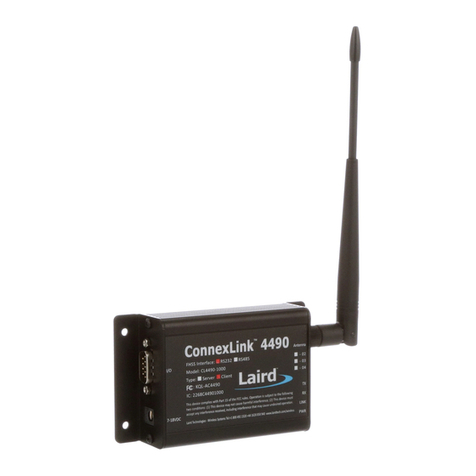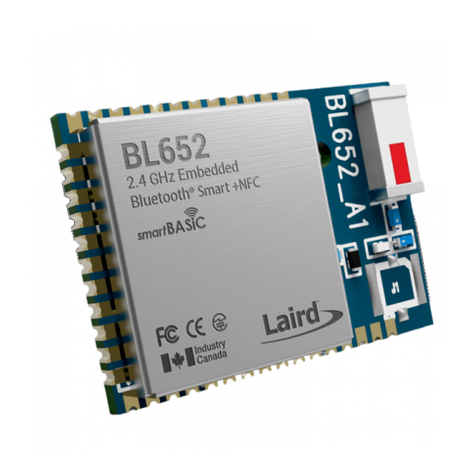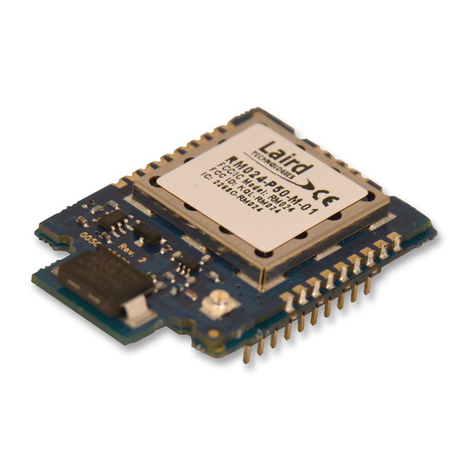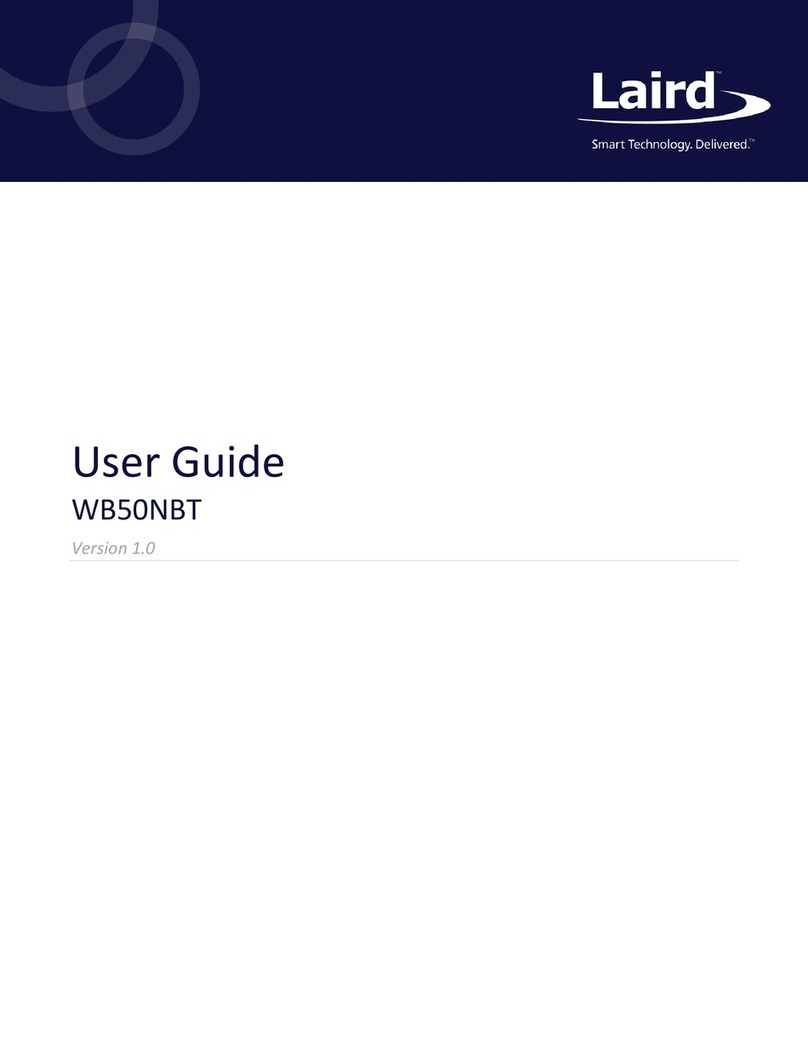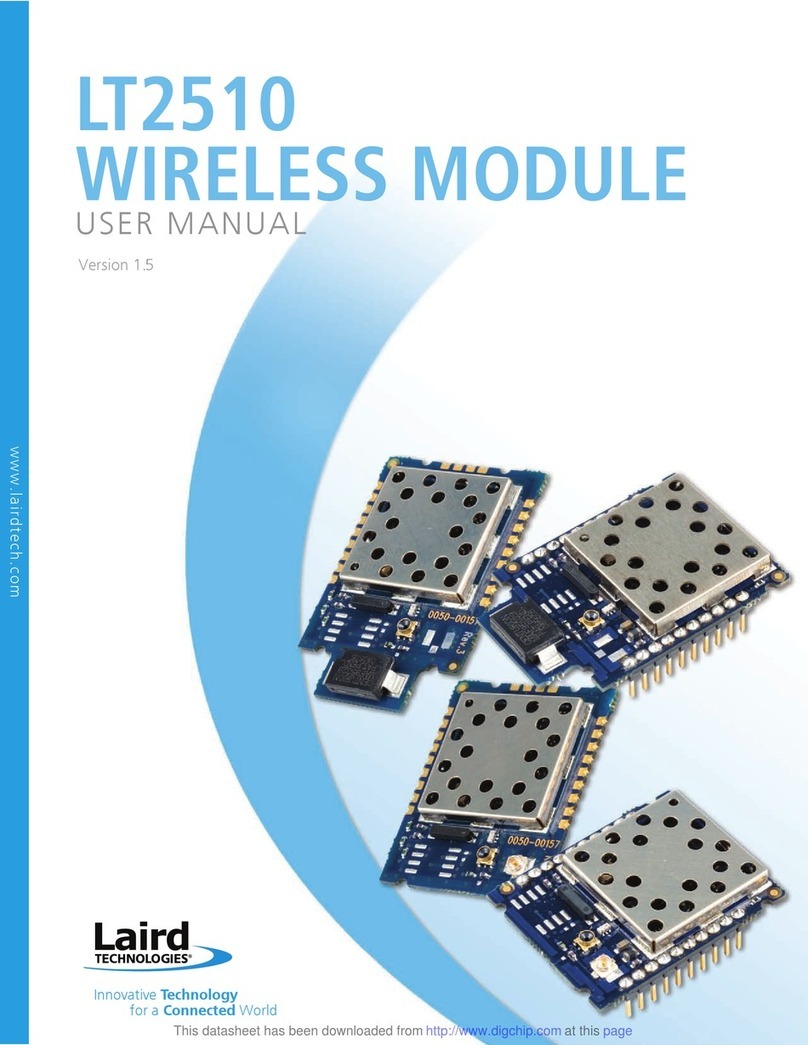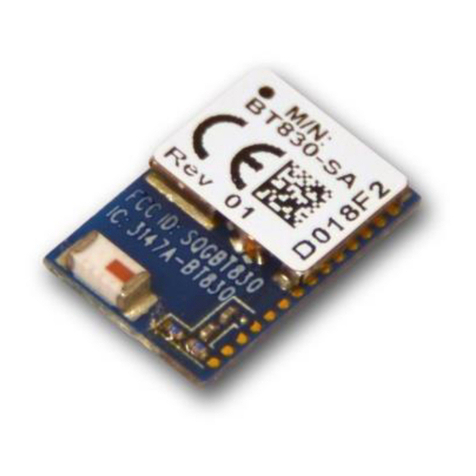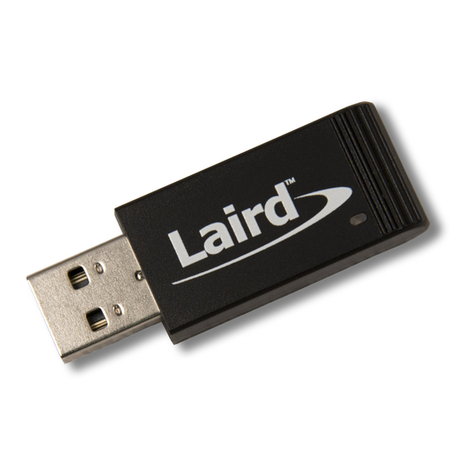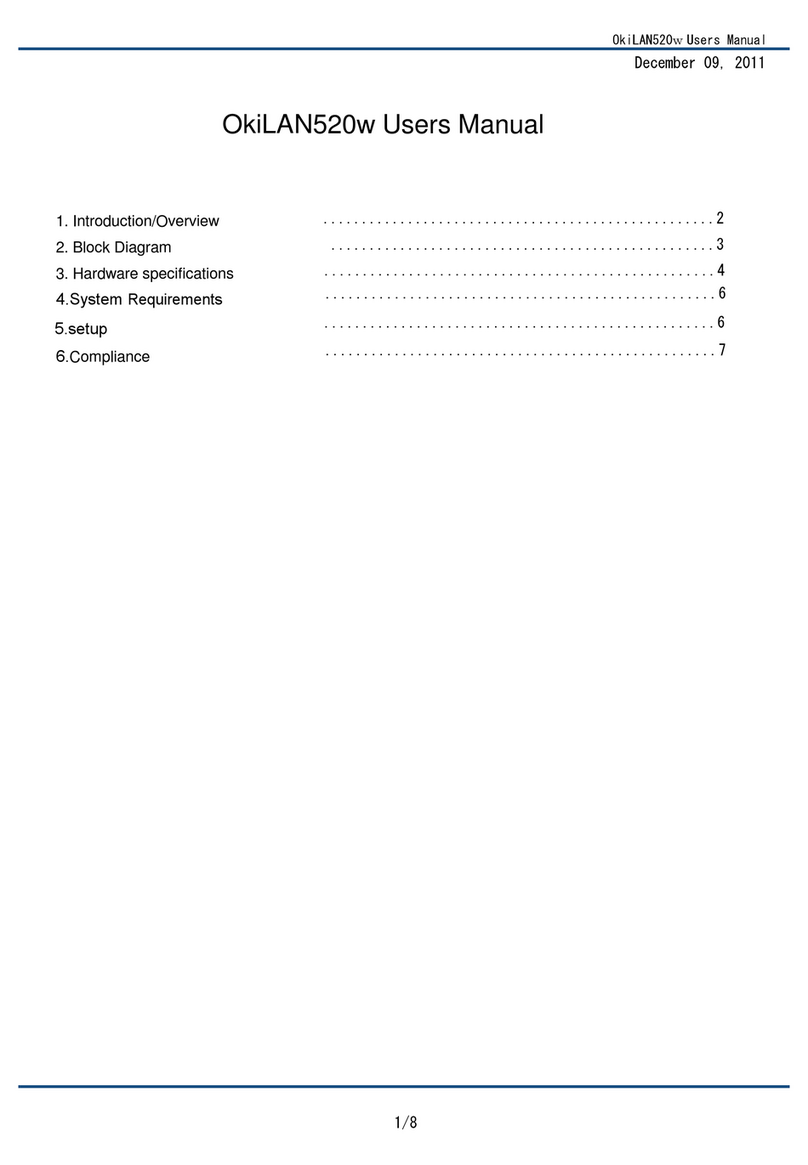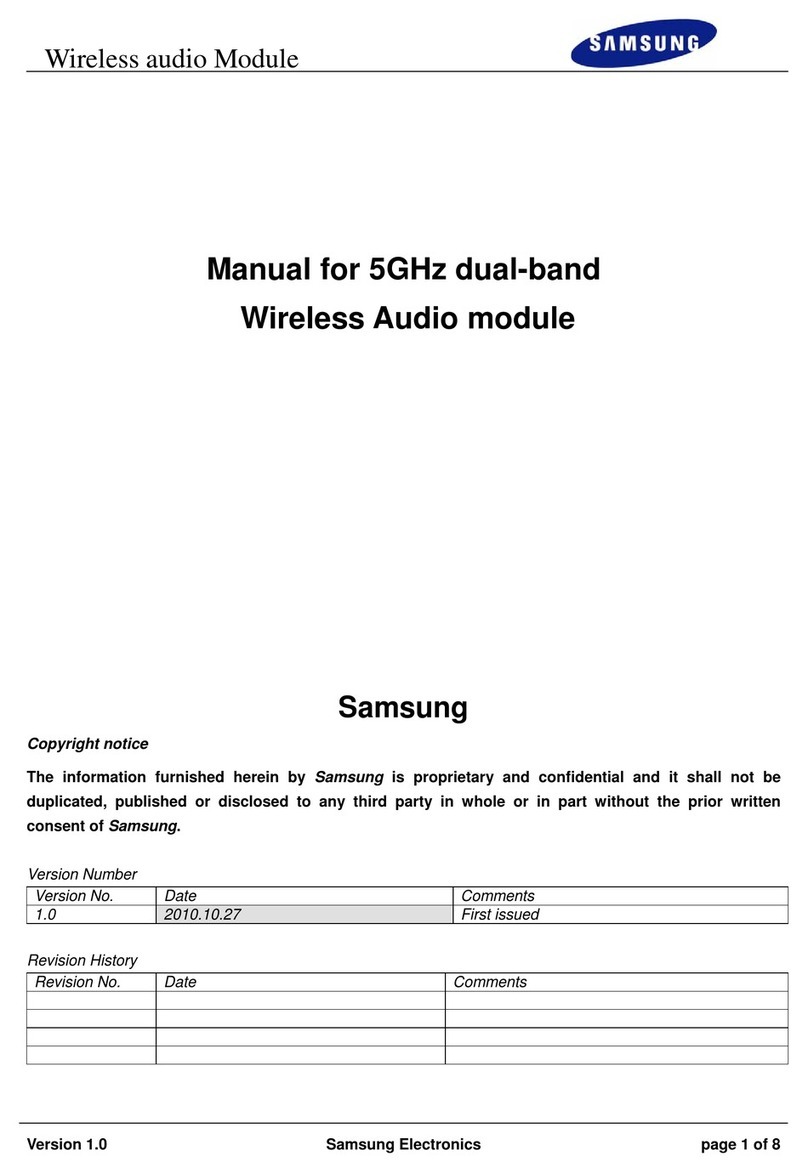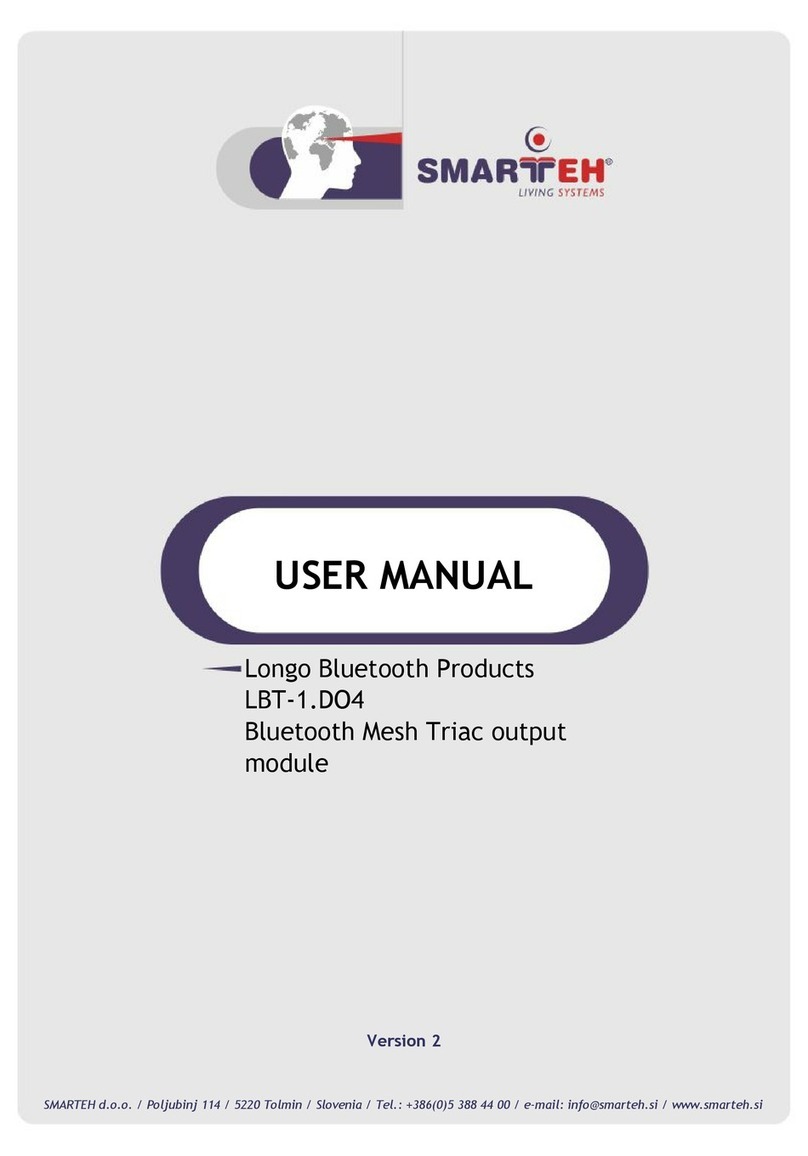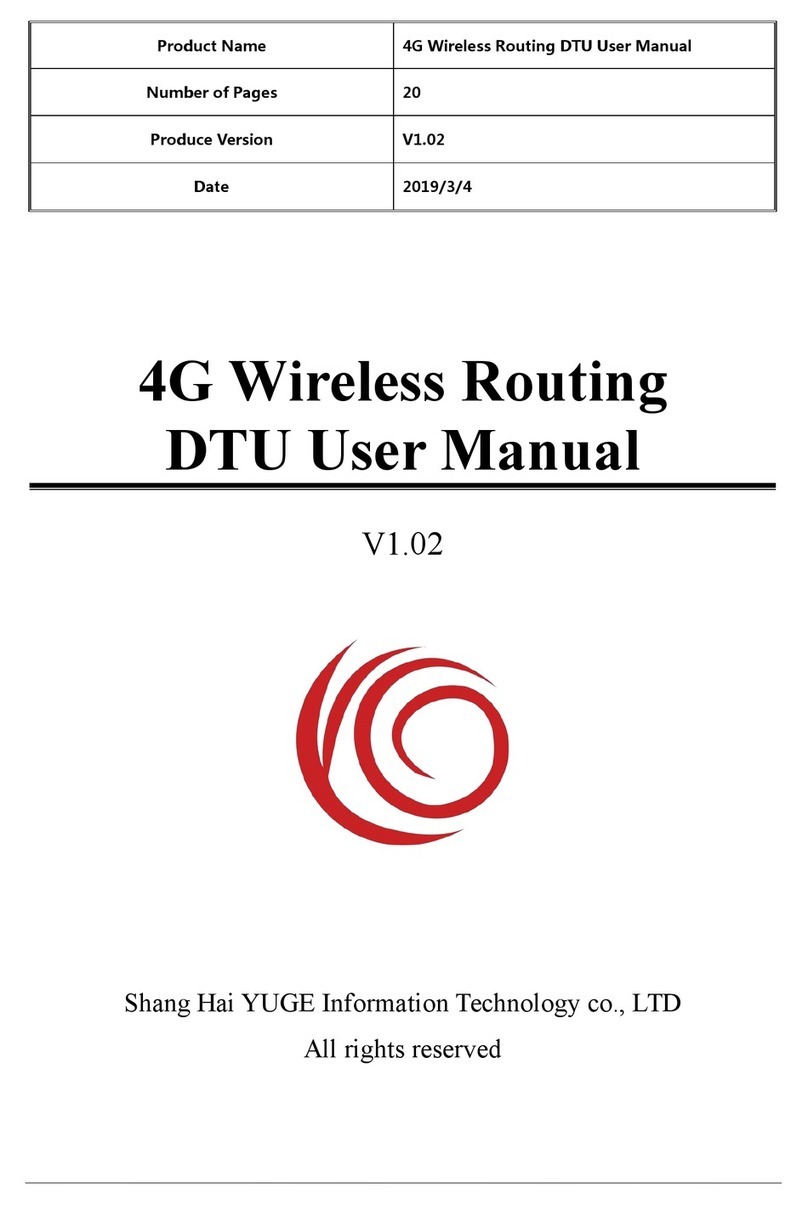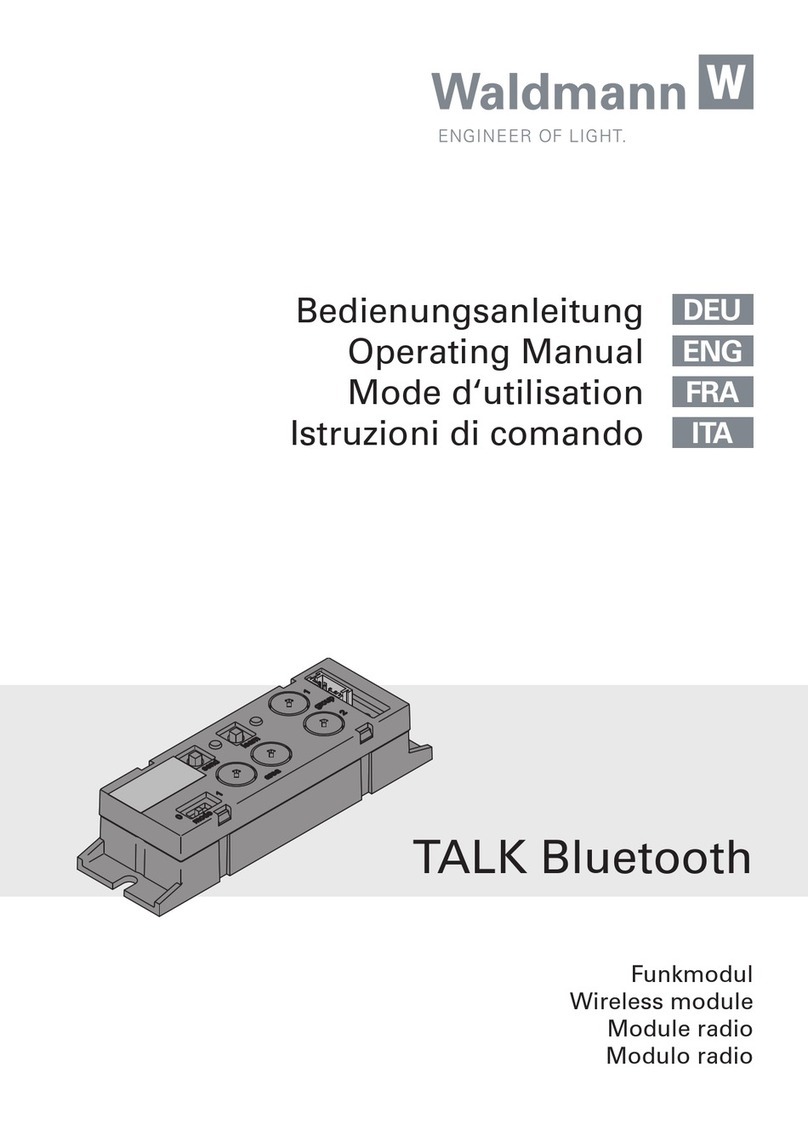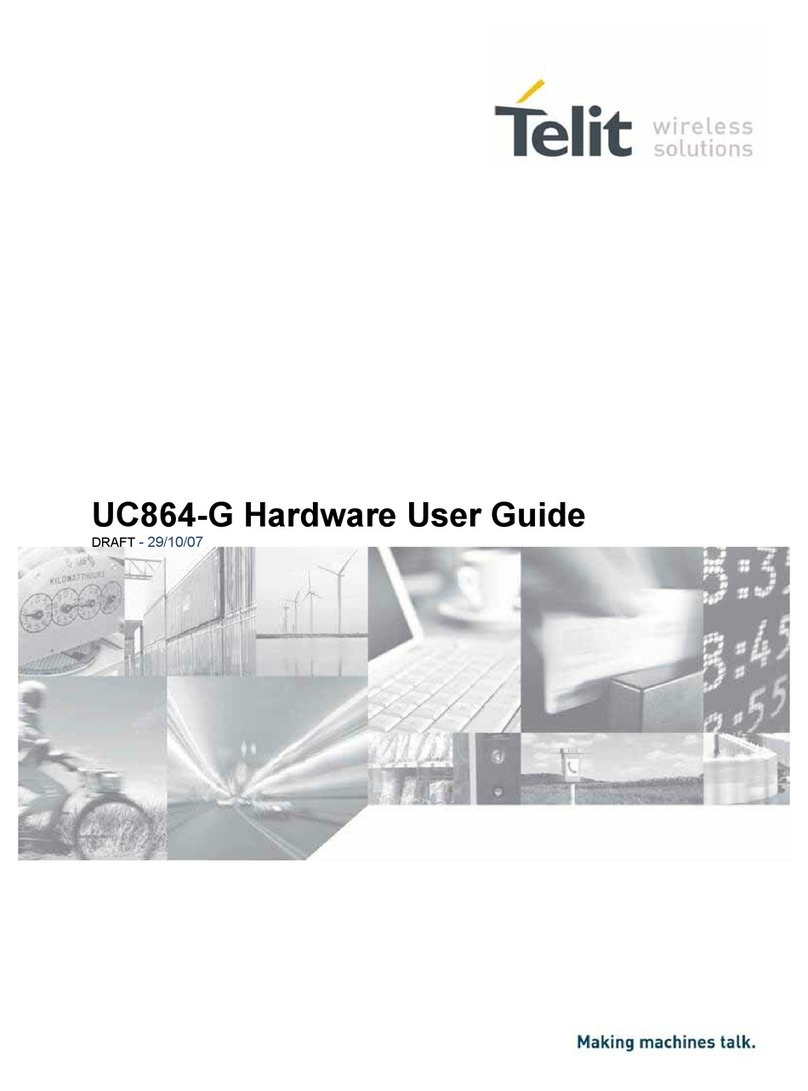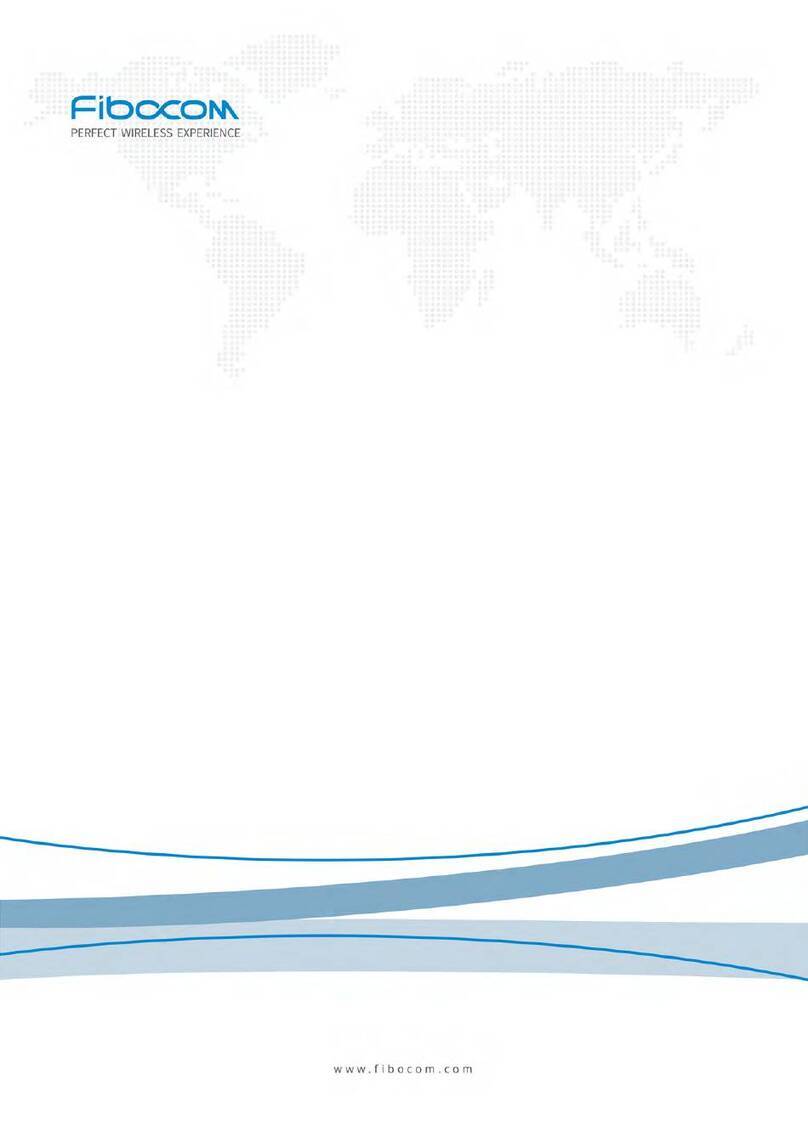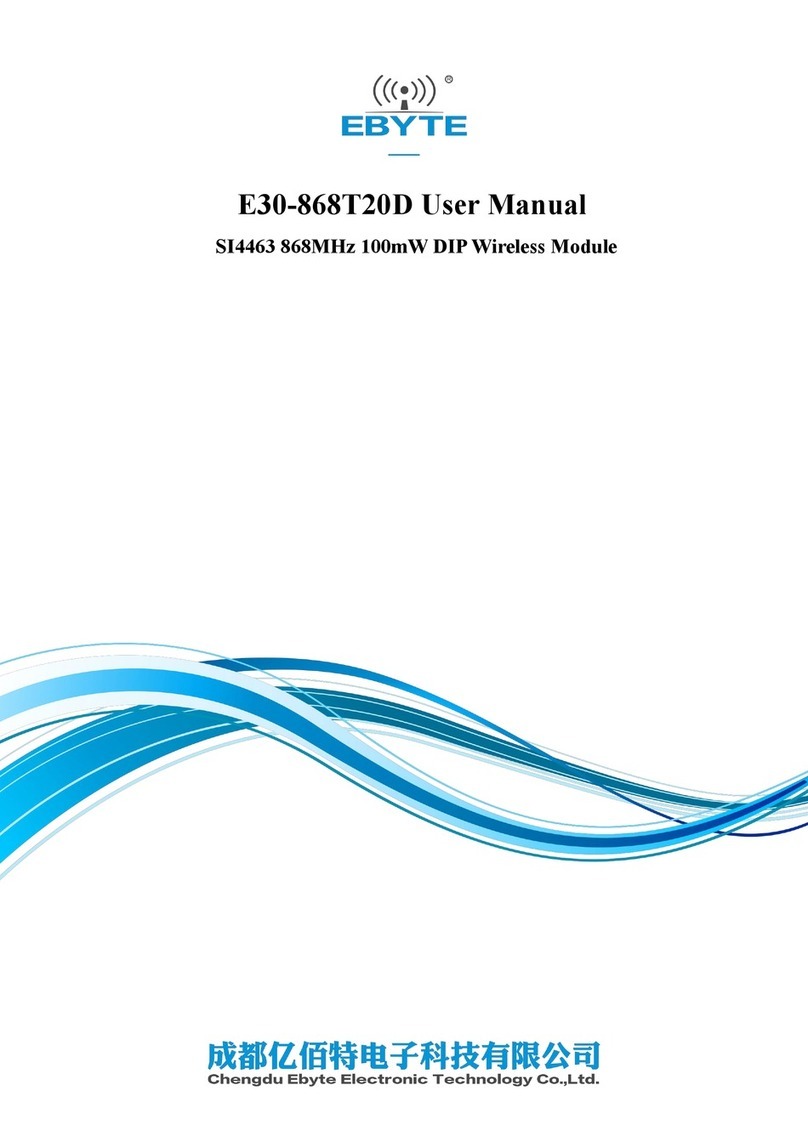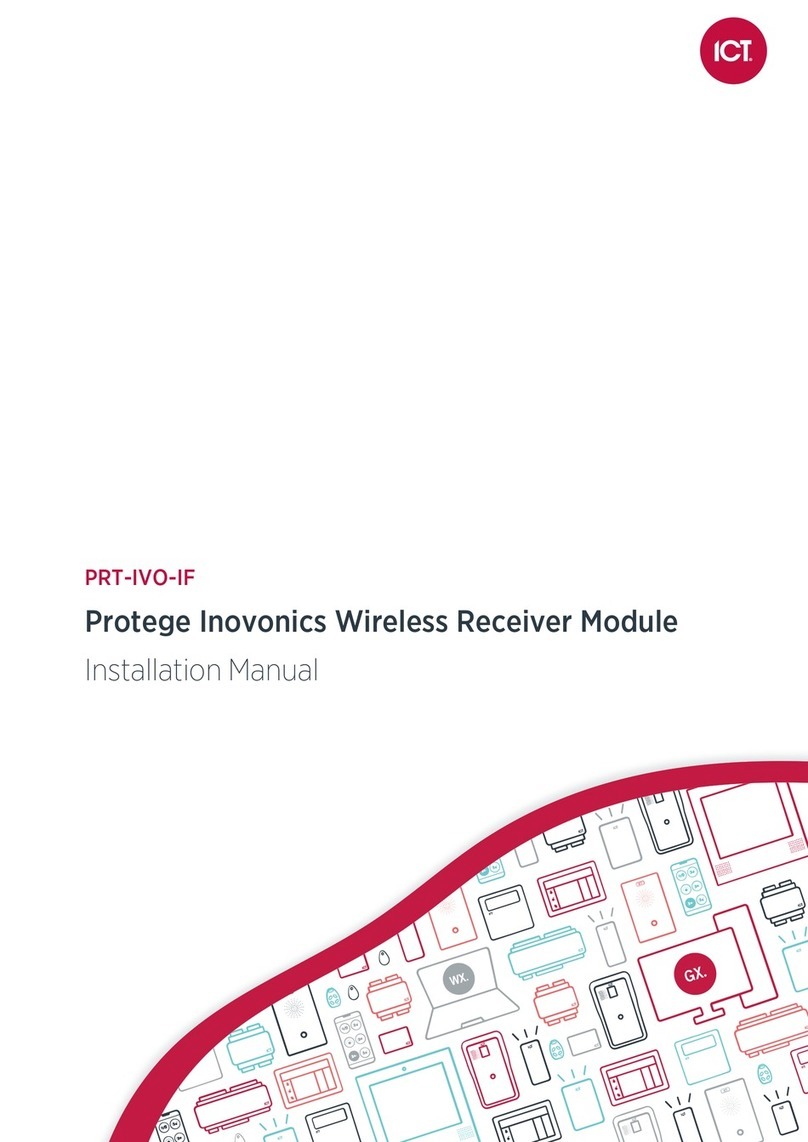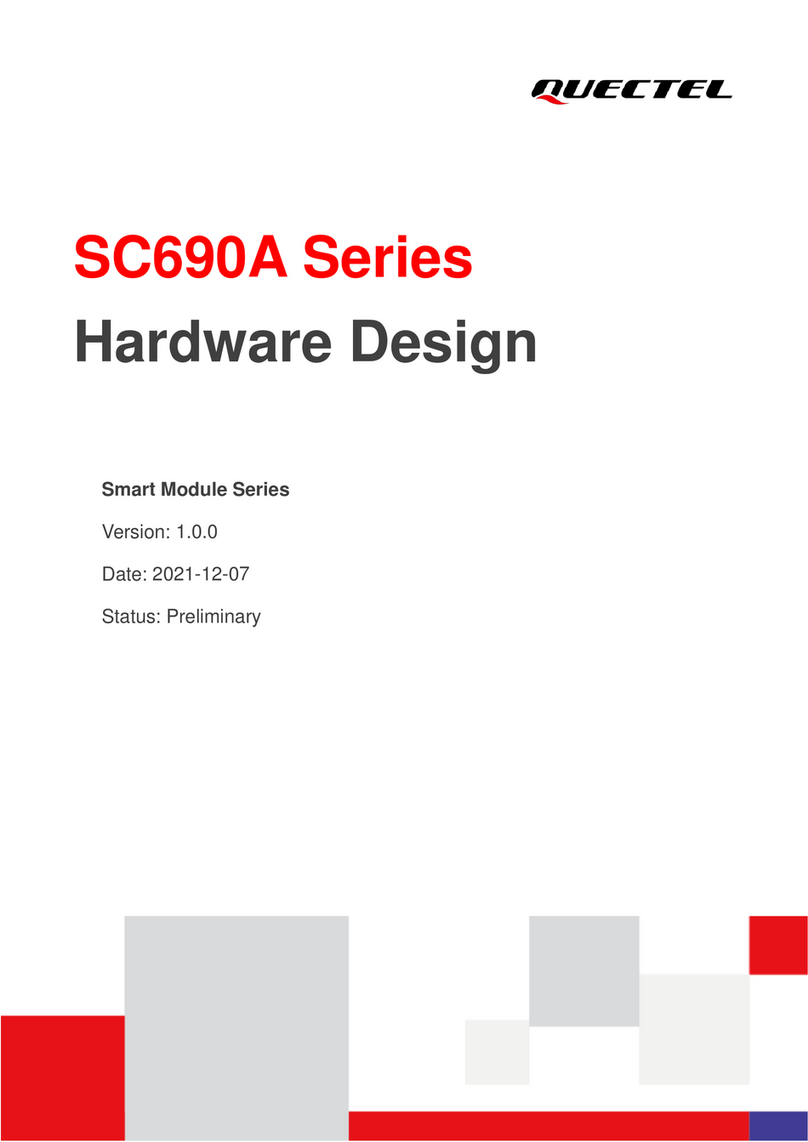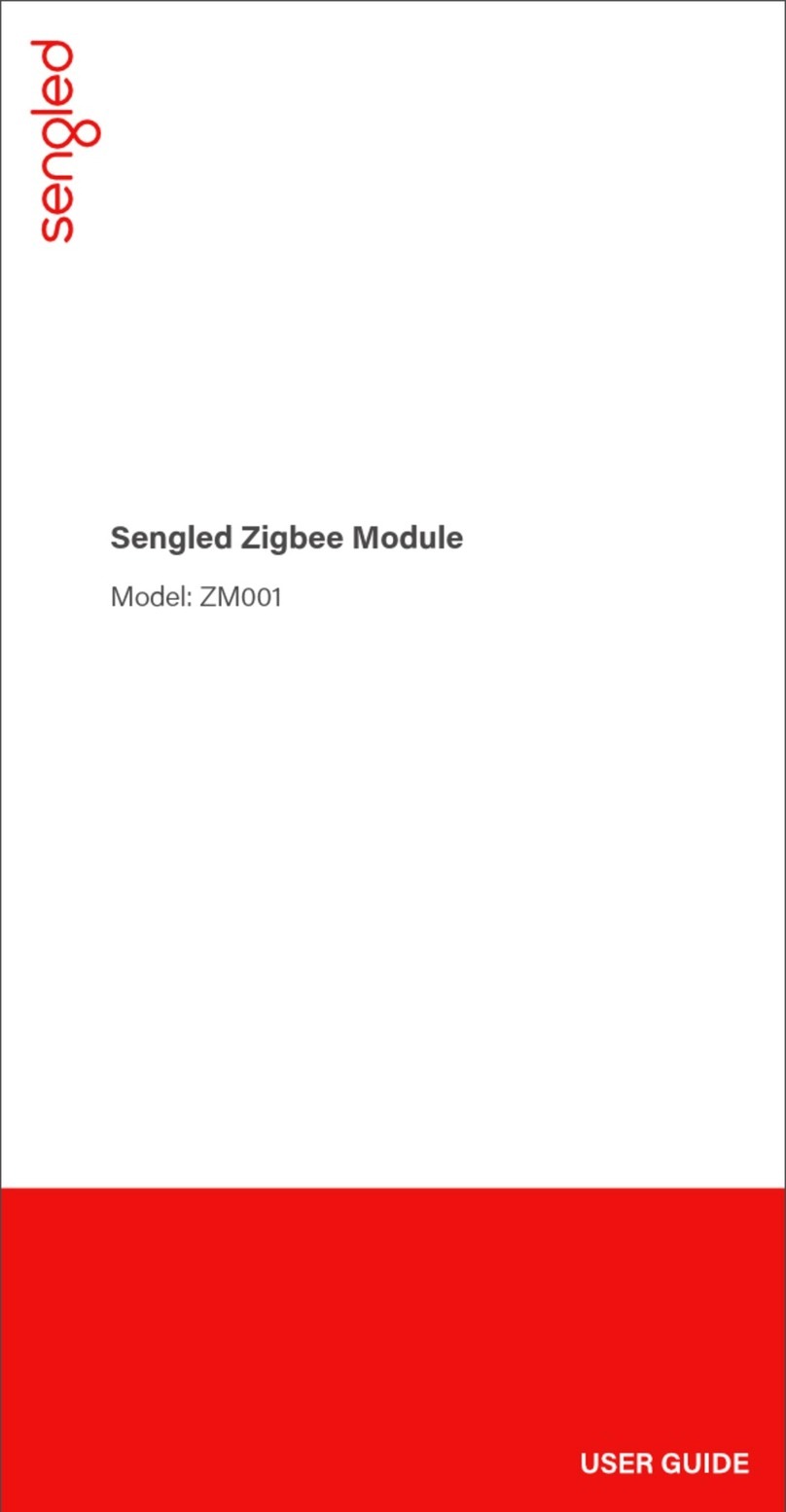Tips:
The more slots per hop, the less likely that retries will occur on a new frequency which may reduce the
effectiveness of the module as a Frequency Hopping radio.
Idle current consumption increases as more slots are added.
You must use the same number of slots for every radio on the network.
Full duplex only reserves the first slot for the server. If there are six slots, the first slot is reserved for the
server to transmit and the remainder is shared by the clients. If there is only one slot per hop available, the
Server and Client will alternate transmissions with the Server transmitting in one slot/hop and the client
transmitting on the next hop.
RF Packet Size should not be set to less than 0x07 or the Enter AT Command string will not be accepted. If
the RF Packet Size is less than 0x07, the Enter AT Command string can still be issued in Force 9600 mode.
RS-485 Data Enable
The timing of the DE-RE pin varies depending on the selected interface baud rate. The values to set are:
485_Delay_H: Address 0x49
485_Delay_M: Address 0x4A
485_Delay_L: Address 0x4B
To set them, use the following equation (round the result up):
Address 0x49 and 0x4A: 485H/M = 8.125 MHz / (81*Baud_Rate), quotient only
Address 0x4B: 485L = (8.125MHz / Baud_Rate) mod 81
So for 19,200 you should calculate 00 05 12.
Flow Control
Although flow control is not required for transceiver operation, it is recommended to achieve optimum system
performance and to avoid overrunning the RM024’s serial buffers. The RM024 uses separate buffers for
incoming and outgoing data.
RXD Data Buffer and CTS
As data is sent from the OEM host to the radio over the serial interface, it is stored in the RM024’s buffer until
the radio is ready to transmit the data packet. The radio waits to transmit the data until one of the following
conditions occur (whichever occurs first):
The RF packet size is reached (EEPROM address 0x5A)
An interface timeout occurs (EEPROM address 0x58)
The data continues to be stored in the buffer until the radio receives an RF Acknowledgement (ACK) from the
receiving radio (addressed mode), or all transmit retries/broadcast attempts are used. Once an ACK has been
received or all retries/attempts are exhausted, the current data packet is removed from the buffer and the radio
begins processing the next data packet in the buffer.
To prevent the radio’s RXD buffer from being overrun, we strongly recommend that the OEM host monitors the
radio’s CTS output. When the number of bytes in the RXD buffer reaches the value specified by CTS_ON
(EEPROM address 0x5C - 0x5D), the radio de-asserts (high) CTS to signal to the OEM host to stop sending data
over the serial interface. CTS is re-asserted after the number of bytes in the RXD buffer is reduced to the value
specified by CTS_OFF (EEPROM addresses 0x5E- 0x5F); signaling to the OEM host that it may resume sending
data to the transceiver.
